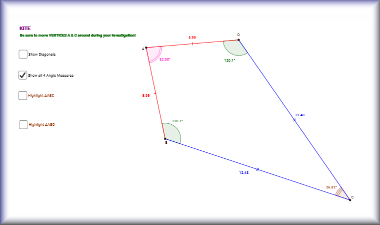

The area of a parallelogram is the area occupied by it in a two-dimensional plane. Some important formulas of Trapezium, Kite, and Parallelogram are given below. What do we call parallel sides of the trapezium Pair of non-parallel sides are perpendicular Which of the following quadrilaterals is a regular quadrilateral?

It is said that Chinese philosophers Mozi and Lu Ban were the ones to come up with the shape kite in the 5th century BC. In fact, there’s a bone in our wrist which is also called a trapezium. Orion Nebula, a group of stars in the sky, is also known as a trapezium. Parallelepiped is a 3D parallelogram and is formed when you shear the opposite sides of a square or a rectangle. The word “parallelogram” has its origin in Latin roots in the 16th century, it was formed from the Latin words “Parallelos” which literally means parallel, and “gramme” which means line. Hence, the perimeter of the trapezium is 30cm. Solution: Perimeter of trapezium= sum of all its sides Find the perimeter of a trapezium whose sides are 6cm ,7cm, 8cm, and 9 cm Hence, the area of a parallelogram is 35 sq cm.ģ. Solution- Given, Base = 5cm and Height = 7 cm Find the area of a parallelogram whose base is 5 cm and height is 7cm. Find the perimeter of kite whose sides are 21cm and 15cmĢ. The kite can be seen as a pair of congruent triangles with a common base.ġ. The angles of a kite are equal whereas the unequal sides of a kite meet. The smaller diagonal of a kite divides it into two isosceles triangles. The main diagonal of a kite bisects the other diagonal. The two diagonals of a kite bisect each other at 90 degrees. Here are some important properties of a kite:Ī kite is symmetrical in terms of its angles. Right trapezium- A right trapezium includes at least two right angles.Ī kite is a quadrilateral with two pairs of adjacent and congruent (equal-length) sides. Scalene Trapezium- All the sides and angles of a scalene trapezium are of different measures. Isosceles Trapezium- The legs or non parallel sides of an isosceles trapezium are equal in length. The trapezium is of three different types namely: The legs or non parallel sides of an isosceles trapezium are congruent. It implies that two adjacent angles are supplementary. The sum of two adjacent angles is equal to 180°. The sum of the interior sides of a trapezium is equal to 360 degrees i.e., ∠A + ∠B +∠C +∠D = 360° The sides of a trapezium that are not parallel are not equal except in isosceles trapezium The diagonals of the trapezium intersect each other One pair of opposite sides are parallel in trapezium Here are the different properties of a trapezium: The h is the distance between the two parallel sides which represent the height of the trapezium. In the above figure, we can see sides AB and CD are parallel to each other whereas sides BC and AD are non-parallel. Sometimes, the parallelogram is also considered as a trapezoid with two of its sides parallel. The trapezium is also known as a trapezoid. The parallel sides of a trapezium are called bases whereas non-parallel sides of a trapezium are called legs. The trapezium is a type of quadrilateral with two of its sides parallel. The three different types of a parallelogram are: If any of the angles of a parallelogram is a right angle, then its other angles will also be a right angle. The diagonal of a parallelogram always bisect each otherĮach diagonal of a parallelogram bisect it into two congruent triangles The consecutive angles of a parallelogram are supplementary The opposite angles of a parallelogram are congruent The opposite sides of a parallelogram are congruent Here are the different properties of parallelogram: The area of a parallelogram relies on its base and height. The opposite sides and angles of a parallelogram are equal.

A parallelogram is a quadrilateral with two of its sides parallel.


 0 kommentar(er)
0 kommentar(er)
